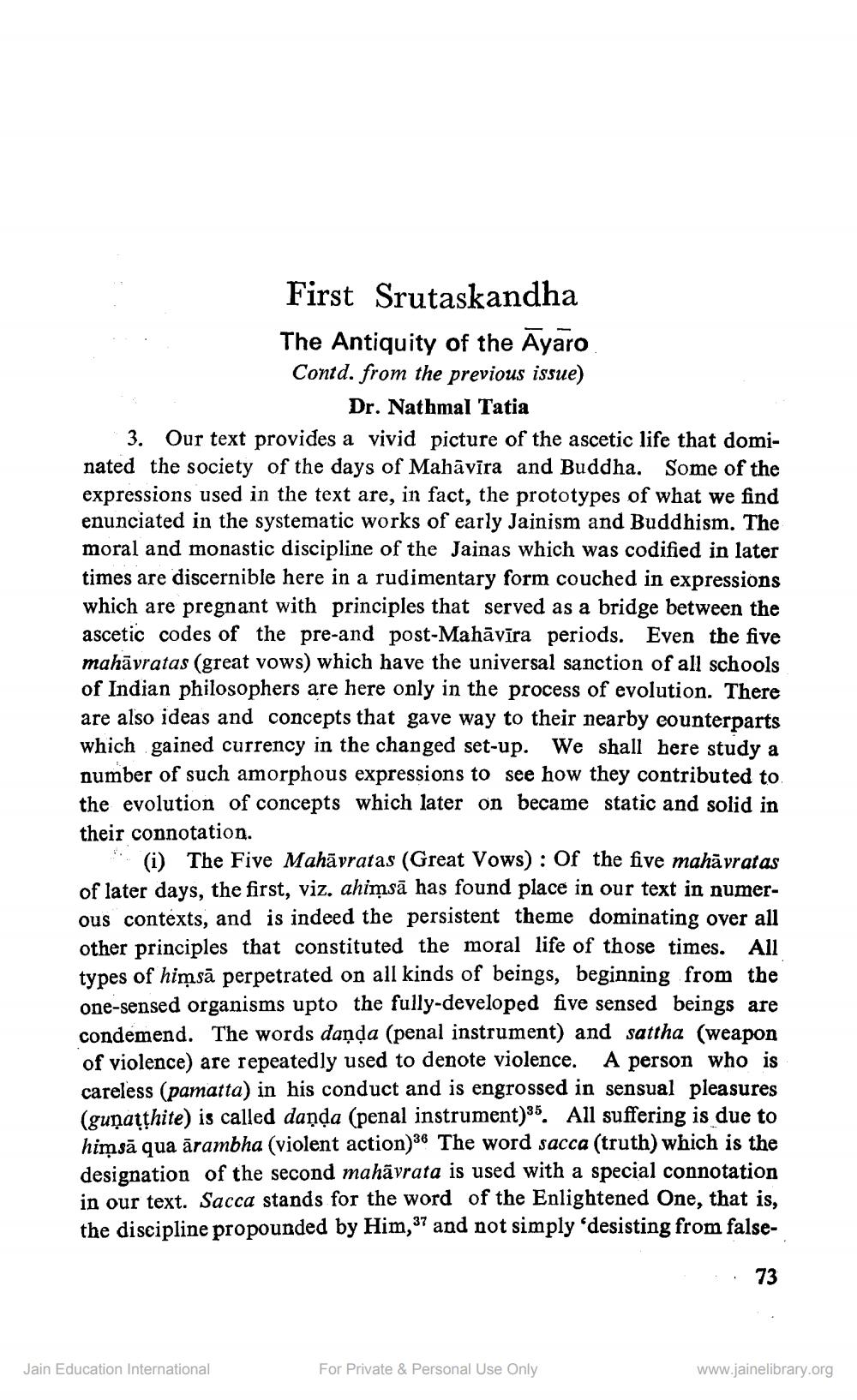________________
First Srutaskandha
The Antiquity of the Ayaro Contd. from the previous issue)
Dr. Nathmal Tatia
3. Our text provides a vivid picture of the ascetic life that dominated the society of the days of Mahavira and Buddha. Some of the expressions used in the text are, in fact, the prototypes of what we find enunciated in the systematic works of early Jainism and Buddhism. The moral and monastic discipline of the Jainas which was codified in later times are discernible here in a rudimentary form couched in expressions which are pregnant with principles that served as a bridge between the ascetic codes of the pre-and post-Mahāvīra periods. Even the five mahāvratas (great vows) which have the universal sanction of all schools of Indian philosophers are here only in the process of evolution. There are also ideas and concepts that gave way to their nearby counterparts which gained currency in the changed set-up. We shall here study a number of such amorphous expressions to see how they contributed to the evolution of concepts which later on became static and solid in their connotation.
(i) The Five Mahāvratas (Great Vows): Of the five mahāvratas of later days, the first, viz. ahimsā has found place in our text in numerous contexts, and is indeed the persistent theme dominating over all other principles that constituted the moral life of those times. All types of himsa perpetrated on all kinds of beings, beginning from the one-sensed organisms upto the fully-developed five sensed beings are condemend. The words daṇḍa (penal instrument) and sattha (weapon of violence) are repeatedly used to denote violence. A person who is careless (pamatta) in his conduct and is engrossed in sensual pleasures (guṇatthite) is called danda (penal instrument)35. All suffering is due to himsã qua arambha (violent action)36 The word sacca (truth) which is the designation of the second mahāvrata is used with a special connotation in our text. Sacca stands for the word of the Enlightened One, that is, the discipline propounded by Him,37 and not simply 'desisting from false
Jain Education International
For Private & Personal Use Only
73
www.jainelibrary.org




